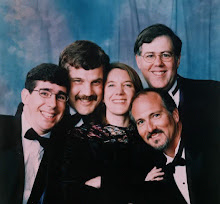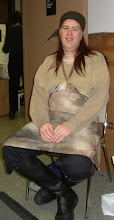Had the opportunity to go to the
summer movie house in St. Louis again last night for a really remarkable
performance of “La Favorite” by Donizetti.
The opera was originally composed for the Paris Operá and in French but
later Donizetti created an Italian version which has been historically
preferred. Famously, Luciano Pavarotti
championed this opera, but I think he only performed the Italian version. I had seen it once before in Italian and had
loved the music, but was not as enthusiastic about the plot and libretto – more
about that below.
But first I have to say this was a
top-notch performance musically and dramatically in every way. The singing was spectacular and not just by
the principals, but by everyone, including the chorus. The work was also very well conducted and the
orchestra was terrific. I really do not understand why the Met doesn’t engage
John Osborn more often. He has a
gorgeous voice. It is bright with a beautiful
ring to it. He is sensitive musically
and able to spin the most delicate phrases and when necessary also able to
effectively thunder out. And not only
that but he is a great actor! He completely inhabits his roles and always puts
in a very committed performance. I have
seen him a lot – mostly in European productions – and I really like him. He is
particularly good with these sort of angry, crazy tenor roles. And in this opera he was especially
outstanding as Fernand. As his rival
King, Alphonse, the baritone Vito Priante did a beautiful job. His is another
gorgeous voice and he is also a baritone who can act! And as their love interest Léonor de Guzman,
mezzo-soprano Veronica Simeoni was also outstanding. And then the supporting cast – all equally excellent:
Pauline Rouillard as Inés, bass Simon Lim as Balthazar and a wonderful
comprimario tenor, Ivan Ayon Rivas, as Don Gaspar. During intermission Rivas was interviewed and
struck me as being probably one of the nicest and sweetest guys ever and he must
have struck the interviewer the same because he was asked how it was possible
for him (of all people I suppose) to play such a terrible, evil character like
Don Gaspar so effectively and he laughed and essentially said – “It’s called
acting!” And while the Met certainly has
a number of terrific comprimari they really ought to take a look at this guy.
He also had a beautiful voice. The
conductor, Donato Renzetti also was outstanding. Have I made the point yet? Musically this was a terrific, outstanding
performance in my view.
The plot of this opera is, IMHO, a
bit troubled and tiresome, especially for a 21st century audience. I
do not think it is a particularly effective operatic plot. In fact, I don’t much like it at all. When I saw it a couple years ago in a
musically fine production (which is still on YouTube) I found it to be tiresome
and silly. It is essentially a blame the
female victim plot: A beautiful woman,
Léonor de Guzman (who is a historical character BTW, but whose life bore little
to no resemblance to this plot) is promised that she will be queen by the King
but, he is already married and so she becomes his mistress. She then meets and
falls in love with the love of her life (Fernand) but is terrified that he will
find out about her relationship with the King. She resolves to do the right
thing and have her friend and associate Inés go to him and tell him everything. But the jealous Don Gaspar prevents Inés from
taking the information to Fernand. This
then leads to this major confrontation scene where the truth finally comes out
and Fernand rebukes and brutally rejects Leonor out because her impurity is a
stain on his honor (gag!). In the last
act she takes poison and finds him, now back in the monastery and begs for his
forgiveness. He is reluctant at first
but eventually he is overcome with love and affection and he forgives her and
wants to return to a life with her, but it is too late. His honor is saved by her suicide. Leonor is
a victim multiple times in this plot.
This brings me to the staging by
director Rosetta Cucchi, which I found to be exceptionally engaging. Not only that but was visually stunning. Lit
softly the set and creative costumes were all in various shades of gray, blue,
purple, white and black. The only other
color was from the dancers during the 2nd act ballet who were
butterflies. It worked. I immediately could tell that this staging
was an imagined futuristic world. And at
the intermission there was an extensive interview with her and she laid out her
vision, for which I am grateful. I was
able to pick up some of it but I would not have gotten all of it were it not
for this interview. So the original she
said takes place in the year 1398 (or something like that) and she turned the
numbers around to 8931 and set the opera in a distant future. In this world the monks are the keepers of
the chemistry of life and it is they that have the secret to preserving life
and sustaining life. Their monastery is
made to look like the periodic table – on purpose (the set designer said as
much) – and that which is essential to life – water and various kinds of plants
are carefully stewarded by the monks.
Balthasar therefore yields much power and he is, like many who have that
kind of power, a despot. In this world,
women have become “incubators” – they are de-humanized and have no feelings at
all, and this is symbolized by their long flowing white hair. Leonor is an
anomaly as she is not yet completely de-humanized. She is still capable of feelings and because
of this she is both desperately desired and also feared and shunned. This is symbolized by her long flowing blond
hair which slowly starts to turn white (until she cuts it all off when she
pretends to be a boy in the last act). So Alphonse desires her, Fernand desires
her and Balthasar and Don Gaspar hate her.
In act 2 the ballet features two dancers as butterflies who emerge from
their cocoon only to suffocate in the constriction of the confines of this
harsh society, symbolized by a womb like clear structure which I cannot
describe but was exceptionally effective and both beautiful and terrifying. But
the de-humanization has an effect on the men as well. Dehumanizing the women has resulted in the
dehumanization and enslavement of the men as well. None of them are able to strike out on their
own, including the King. Fernand does it
and is harshly shamed until he returns to the fold. The arrest of Inés was
particularly revealing as this arrest included a symbolic rape That further
dehumanized the men (she was already dehumanized). In this society “honor” becomes a meaningless
word that stands for the highest value but really has been stripped of all
meaning (see Shakespeare on this one – I think Cucchi was channeling the Bard
here because I kept thinking of Marc Antony’s great speech about the “honorable
men” who murdered Caesar and Falstaff’s terrific speech from Henry IV, part
I.) Ultimately we are all human together
– or we can loose our humanity by giving in to the dictates of despots who
promise us security but which results in objectifying violence and hate.
(Digression – Did Cucchi think at
all about the American election, with the most dangerous despot attempting to
become president by dehumanizing and objectifying other groups – including women? She may not have, but this only speaks to the
timeliness of her vision.)
So, I thought this production was
brilliant! She was able to take a rather
misogynist plot and twist it around into something else entirely. And that something else ended up being a
production that was visually stunning, musically brilliant and exceptionally though-provoking. Did it all work? No. The English subtitles (for which I am
grateful) were an exact translation of the libretto and not interpretive in
any way. Therefore sometimes what we saw
on the stage was not consistent with the libretto. And usually this bugs the heck out of
me. But in this case it didn’t. I was fine with it and had no problem just
reading past that and taking in the stage image. This is the case because I find this libretto
to be very poor on the whole. Donizetti
create incredibly beautiful music for it.
But otherwise there is nothing to redeem this libretto. I cannot recommend this production more
highly. And I hope we see more of
Rosetta Cucchi. She is one brilliant
visionary of a stage director.



